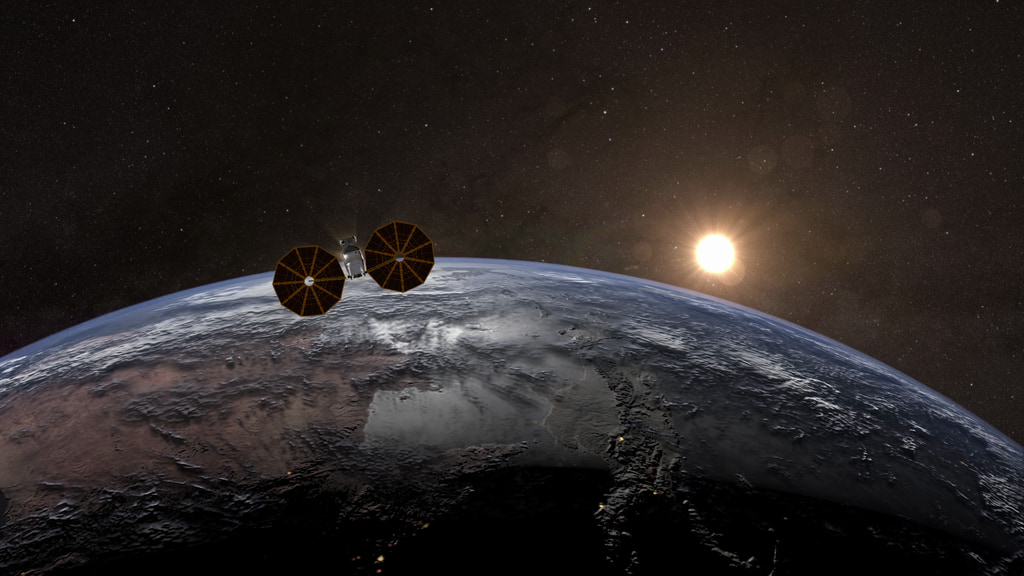Lucy Earth Gravity Assist 2 Trajectory Visualizations
Ride-along view of Lucy’s second Earth gravity assist (EGA). The camera follows Lucy as the spacecraft approaches the sunlit side of Earth before crossing into Earth’s shadow as it slingshots around the planet.
NASA’s Lucy mission is heading to the Jupiter Trojans – two swarms of primitive asteroids trapped in Jupiter’s orbit that may hold clues to the formation of the planets. Lucy launched on October 16, 2021, and returned home exactly one year later for the first of three gravity assists, raising its orbit to skim the inner edge of the main asteroid belt between Mars and Jupiter. Now, Lucy is returning home once again for another gravitational tug. On December 12, at 1:20 pm Eastern Time, it will cross the Moon’s orbit from the direction of the Sun and will be greeted by a brilliant view of Australia and the Pacific Ocean. At 11:15 pm, it will make its closest approach to the planet, skimming about 220 miles above the ocean west of California. The encounter will increase Lucy’s velocity by four-and-a-half miles per second, allowing it to pass over North America in only seven minutes. The 2024 encounter will more than double Lucy’s furthest distance from the Sun, allowing it to reach the L4 Trojans that travel ahead of Jupiter, beginning in August 2027.
Top-down view of Lucy’s EGA2 trajectory with the Moon’s orbit.
Ride-along view of Lucy’s second Earth gravity assist (EGA). The camera follows Lucy as the spacecraft approaches the sunlit side of Earth before crossing into Earth’s shadow as it slingshots around the planet. Vertical version.
Top-down view of Lucy’s EGA2 trajectory with the Moon’s orbit. Vertical version.
Credits
Please give credit for this item to:
NASA's Scientific Visualization Studio
-
Visualizer
- Kel Elkins (USRA)
-
Producer
- Dan Gallagher (KBR Wyle Services, LLC)
-
Scientist
- Katherine Kretke (SwRI)
Release date
This page was originally published on Thursday, December 5, 2024.
This page was last updated on Tuesday, April 1, 2025 at 12:23 AM EDT.
Datasets used
-
CelesTrak Spacecraft Orbit Ephemeris
ID: 454This dataset can be found at: http://celestrak.com
See all pages that use this dataset -
SPICE Ephemerides (SPICE Ephemerides)
ID: 755Satellite and planetary ephemerides
See all pages that use this dataset
Note: While we identify the data sets used on this page, we do not store any further details, nor the data sets themselves on our site.

![NASA’s Lucy spacecraft will make its second of three Earth gravity assists on Dec. 12, 2024.Complete transcript available.Universal Production Music: “Determined Arrival 4-5” by Joel Goodman [ASCAP]; “Floating” by Nicholas Smith [PRS]; “Subtle Confidence 3” by Joel Goodman [ASCAP]Watch this video on the NASA Goddard YouTube channel.](/vis/a010000/a014700/a014734/Lucy-EGA2-Preview-V4.jpg)